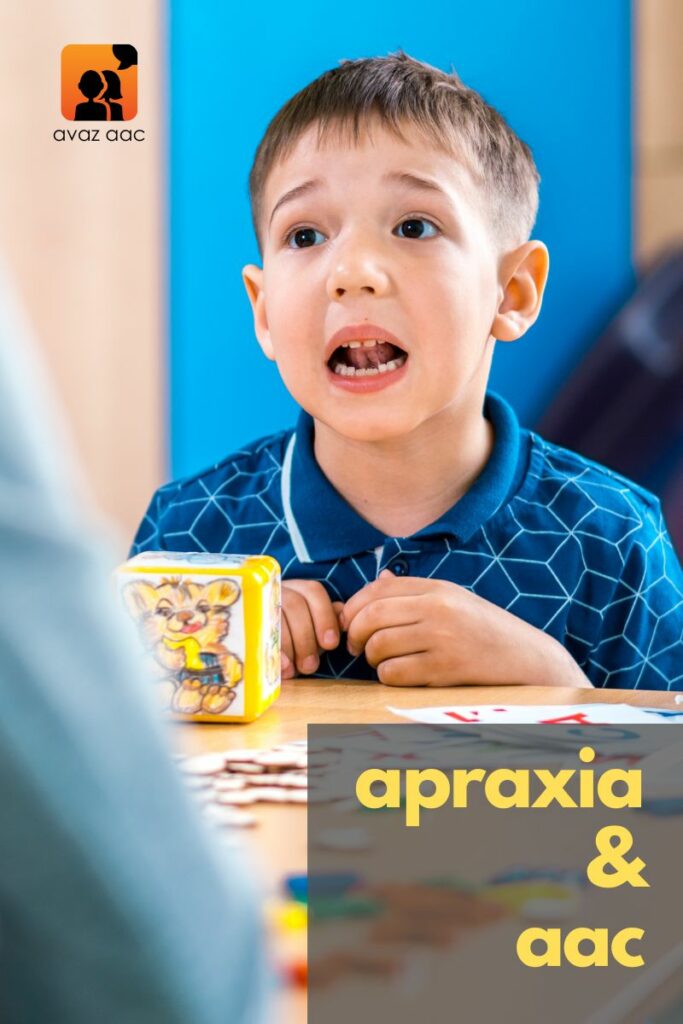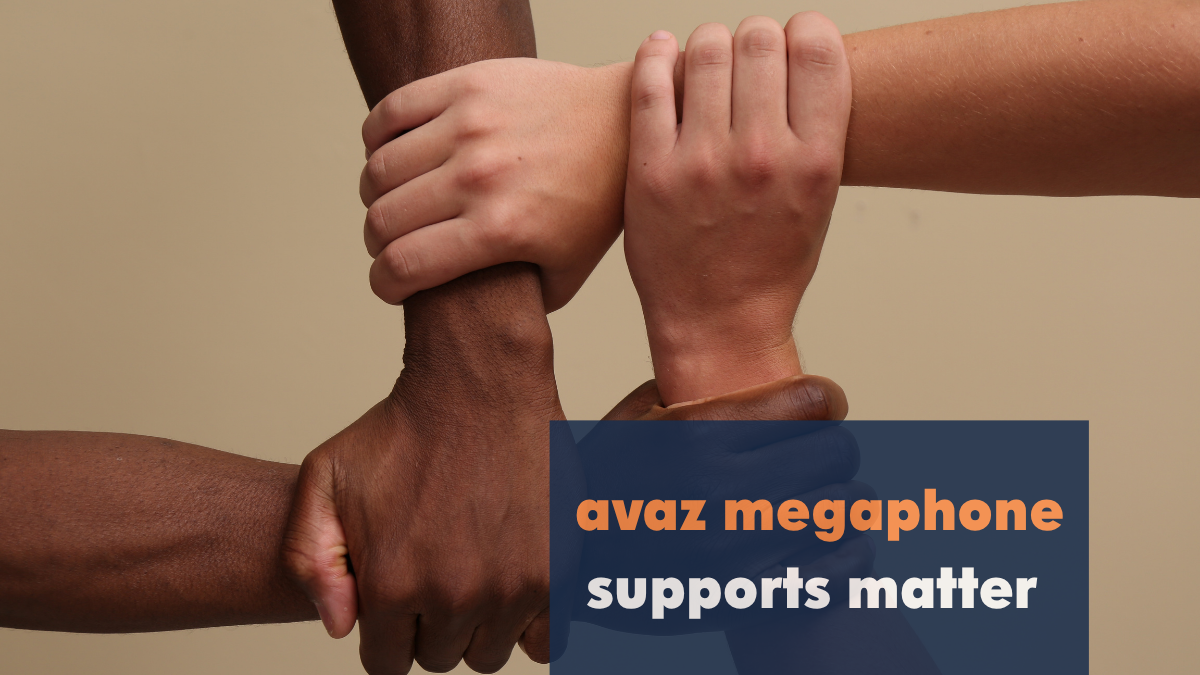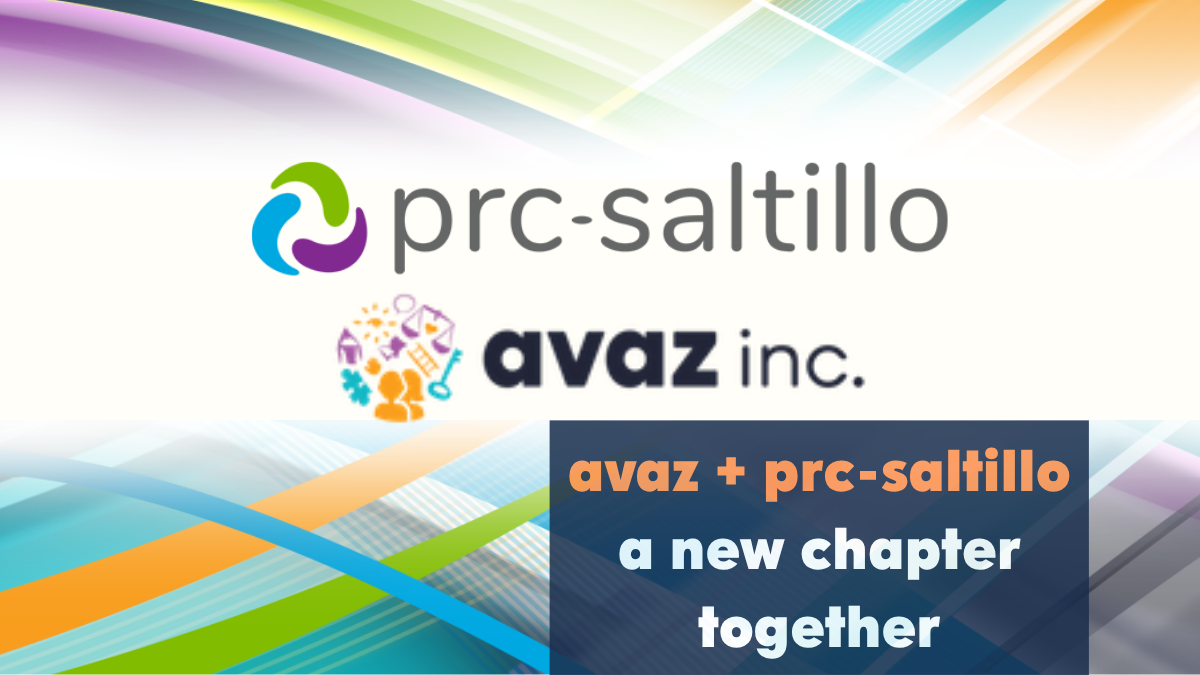With Apraxia Awareness Day just around the corner, let’s learn about the importance of AAC in the rehabilitation of individuals with CAS (Childhood Apraxia of Speech). This blog also throws light on the role of AAC for any child with speech and language delay.


What is Childhood Apraxia of Speech (CAS)?
Apraxia is a pediatric motor speech disorder. It is estimated that Childhood Apraxia of Speech (CAS) occurs in 1 to 2 children per 1000 (Shriberg et al 2019). The deficits impair motor planning and programming, thereby adversely affecting the child’s ability to verbally communicate.
CAS characteristics have a wide range of severity and variability. Years of speech therapy is required for a child to acquire functional communication through verbal speech.
The disorder can persist throughout an individual’s lifetime. There is also a higher risk for language, reading, and spelling difficulties (ASHA, 2007).
Children with apraxia also exhibit compromised intelligibility and subsequent communication frustrations. This in turn leads to challenging behaviors, learned passivity, compromised social interactions and delayed language development (e.g., Binger et al., 2006; Binger & Light, 2007; Cumley & Swanson, 1999; Harris, Doyle, & Haaf, 1996; Waller et al., 2001).
Therapy for CAS
Therapy for CAS should aim to facilitate general communication interactions and support language learning.
We now know that CAS impacts not only speech but also on behavioral, pragmatic, and language skills. This calls for a two-pronged approach to intervention for children with suspected CAS. First, all children with CAS require ongoing, intensive speech therapy to improve their speech skills. In addition, many children may benefit from augmentative and alternative communication (AAC) solutions. AAC can be used to address both their immediate and longer-term functional communication needs (ASHA, in press, 2007).
Why use AAC in CAS?
Using AAC in CAS therapy increases the intelligibility of utterances to all communication partners. It improves the speed and accessibility of communication, while promoting communication independence. According to Binger and Light (2007), AAC supports communication repairs, topic initiation, small talk and narrative discourse for children with CAS. It also supports in improving message length and message complexity. When children with CAS use SGDs, they also show the tendency to take conversational control during an interaction.
Social interactions get better with AAC. Communication frustrations and challenging behaviors come down.
Dual Paradigm Approach for Apraxia
For severe CAS, treatment for natural speech may take several years. Hence, all planned interventions should give importance to multimodal communication (Weitz et al- 1997).
According to Romski & Sevcik (2005), it is important to simultaneously focus on natural speech and AAC. This means that AAC intervention and CAS treatment are incorporated at the same time. This forms the crux of what is a called a Dual Paradigm Approach.
The approach works to improve natural speech skills while enabling AAC use to improve overall communication skills (Oommen and Mc Carthy 2005). This is recommended for moderate to severe motor speech disorders.
Strategies for Dual Paradigm Approach
Here are some strategies that you can use as part of a dual paradigm approach.
Acknowledging breakdowns:
Cumley and Swanson (1999) stressed the need for communication partners to acknowledge communicative breakdowns. This will help the child to know that they need to repair their speech.
Providing models:
To provide an aided AAC model, the communication partner uses the child’s AAC device while communicating with the child. This technique can be used in conjunction with other intervention techniques.
Providing expectant delays:
Expectant delays provide the child both with the time and the expectation for communication. This has been found to result in increased turn-taking and increased message length for several children with suspected CAS (Binger et al., 2006; Binger & Light,
Asking open-ended/higher-level questions:
To facilitate language-rich responses, it is important for communication partners to ask open-ended questions instead of yes/no questions.
Asking these types of questions might assist the child with both cognitive and language development.
Responding contingently to the child’s communicative attempts:
Providing a contingent response to a child’s communicative attempt is crucial. This lets the child that their attempt was not in vain. There are many ways to give contingent responses to what a child says.
If the child’s communicative attempt is not understood, we can do one of the following:
- Requesting clarification.
- Confirming the child’s message.
- Asking a follow-up question.
- Expanding on the child’s message.
Apraxia & Early AAC Intervention
AAC should never be a last resort for children with apraxia. Providing multimodal communication early on can decrease communication behaviors and frustration
Despite the positive outcomes, the dual paradigm approach is not utilized in clinical practice (King et al 2013). Inordinate importance is given only to speech production and clarity.
It is useful to remember that use of AAC interventions is not contingent on failure to develop speech skills. Research shows that waiting for a child to acquire speech naturally or devoting a significant amount of focus to speech-only intervention can ultimately delay language and conversational development (Lüke, 2014; Binger and Light, 2007; Bornman et al., 2001).
Even if the individual has some level of verbal communication, they may have unmet communication needs. The inclusion of AAC with conventional speech therapy can help meet those needs.
AAC Tools for Apraxia
The tried & tested aided AAC tools that can be used with children with suspected childhood apraxia include:
1. Remnant Books
Remnant Books help to remind them of a particular event or activity they have attended. For instance, dry leaves stuck to one page of their remnant book to remind them of their recent visit to the park.
2. Theme-Specific Boards
A board for playing with vehicles; a board for going to a particular restaurant)
3. Pre-Programmed Messages
Pre-programmed messages on a voice output device (Binger et al., 1989) helps them to initiate and maintain small talk and to share stories. It supports social interactions, alleviates communication frustrations, and decreases challenging behaviors (Cumley & Swanson; Waller et al., 2001).
These AAC tools have been used to support various aspects of communication with children with suspected CAS, including communication repairs, topic initiation, small talk, narrative discourse, message length, and message complexity.
In the context of suspected CAS, the role of AAC may often be more of speech supplementation rather than speech replacement for a child. This is because most of these children will rely primarily on their speech for communication. For example, a child might use a topic board and/or first letter cueing on an alphabet board to provide contextual information for a listener.
Conclusion
It is vital for individuals to achieve their educational, health, community, social and personal goals. Communication helps in all of these aspects. Depending on the child’s progress with natural speech abilities, they may move from using AAC as an alternative strategy toward using AAC as an augmentative strategy (Cumley and Swanson 1999).
WRITTEN BY
Niveditha Ryali
Speech – Language – Swallowing Therapist
I have years of experience that comes from working in NHS(UK), special schools, hospitals and private practice. My passions are working on improving Speech, Language and Swallowing skills in children and adults. I also strive to facilitate early communication in children with complex communication needs, thereby improving parent-child bonding.





